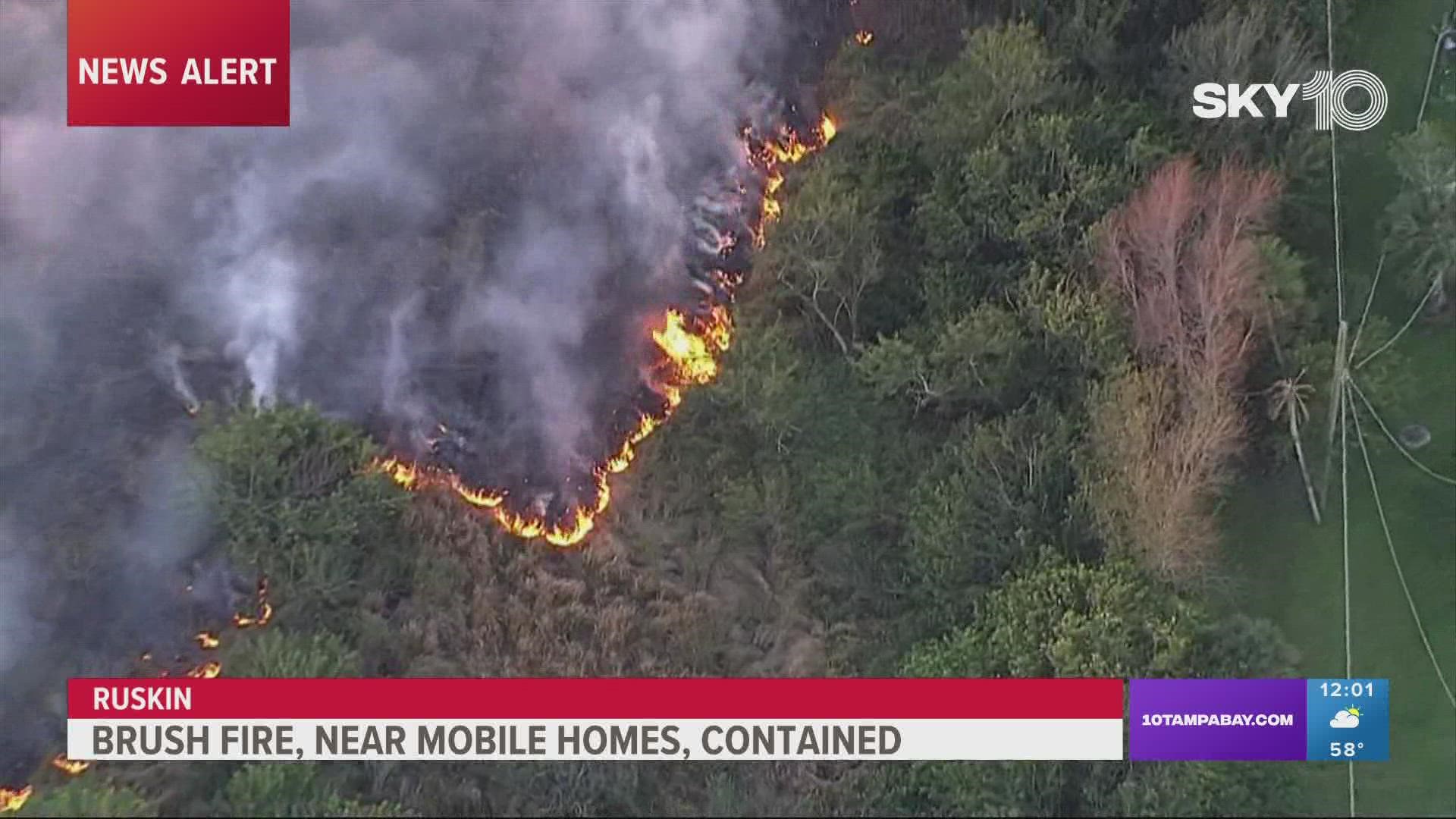ST. PETERSBURG, Fla. — We all love and live for Florida's dry season! It means less rain, more comfortable temperatures and lower humidity. But it is also the time of year that wildfires become more common.
While wildfires in Florida are nothing compared to what they experience on the West Coast, they can still become a hazard. Wildfire season in Florida typically runs from late winter into spring.
This is the time of year when we have been in the dry season for months after the rainy season ended back in October. In winter, more plants and grasses turn brown due to less sunshine and cooler/freezing temperatures.
Also during winter into spring, we typically see low humidity and gusty winds behind cold fronts, which are the ingredients you need for fires to spread quickly.

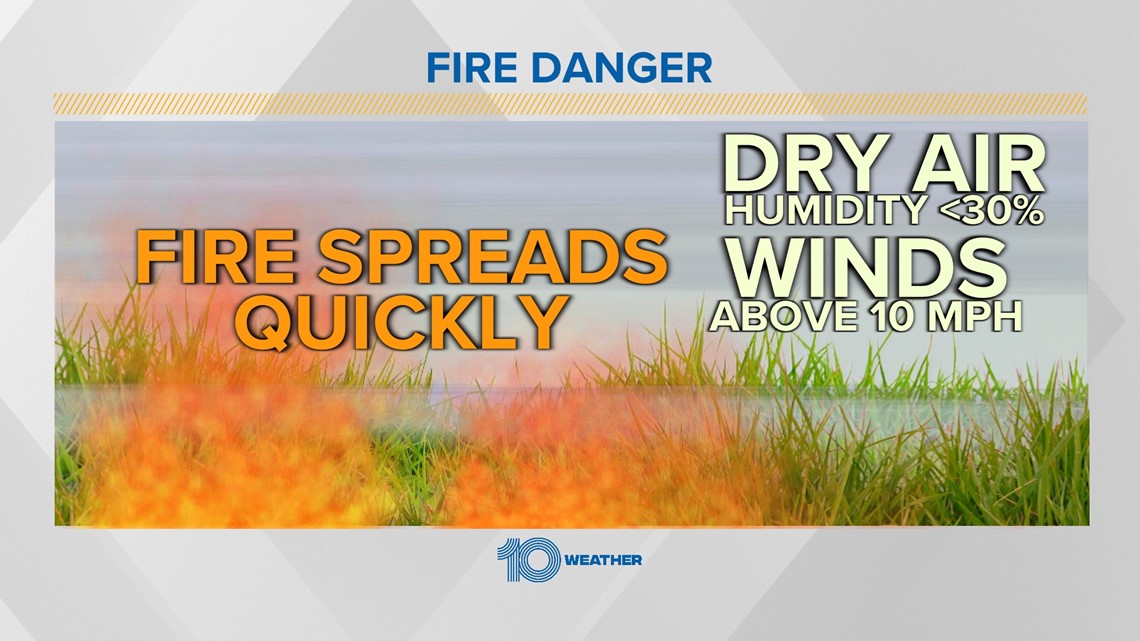
So what's the outlook this year?
Above-average, but mainly for the Panhandle into north Florida. This is an area that has seen some drought conditions. Parts of north Florida are actually under a moderate to severe drought. For central and south Florida plenty of rainfall from summer and the tropical season will keep the risk near normal.

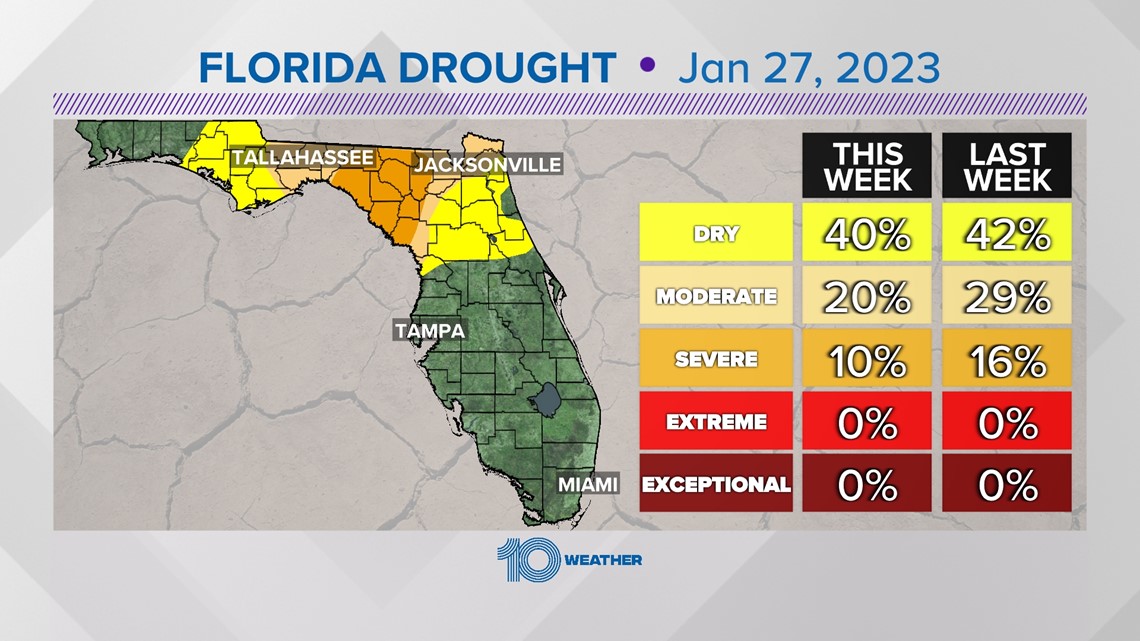
The National Interagency Fire Center puts out monthly Significant Wildland Fire Potential Outlooks. The outlooks for February through March show an elevated risk for wildfires in the same areas that are experiencing some drought and have also had hard freezes killing some vegetation.

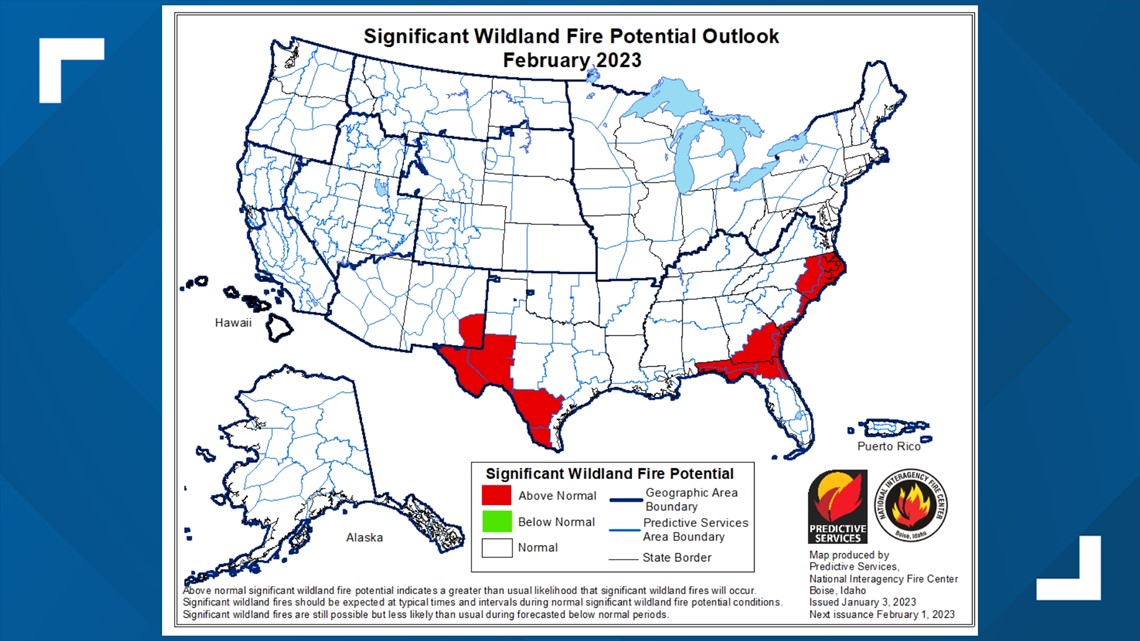
The Panhandle toward Jacksonville and up the coast into the Carolinas will have the highest risk for the end of winter into early spring.

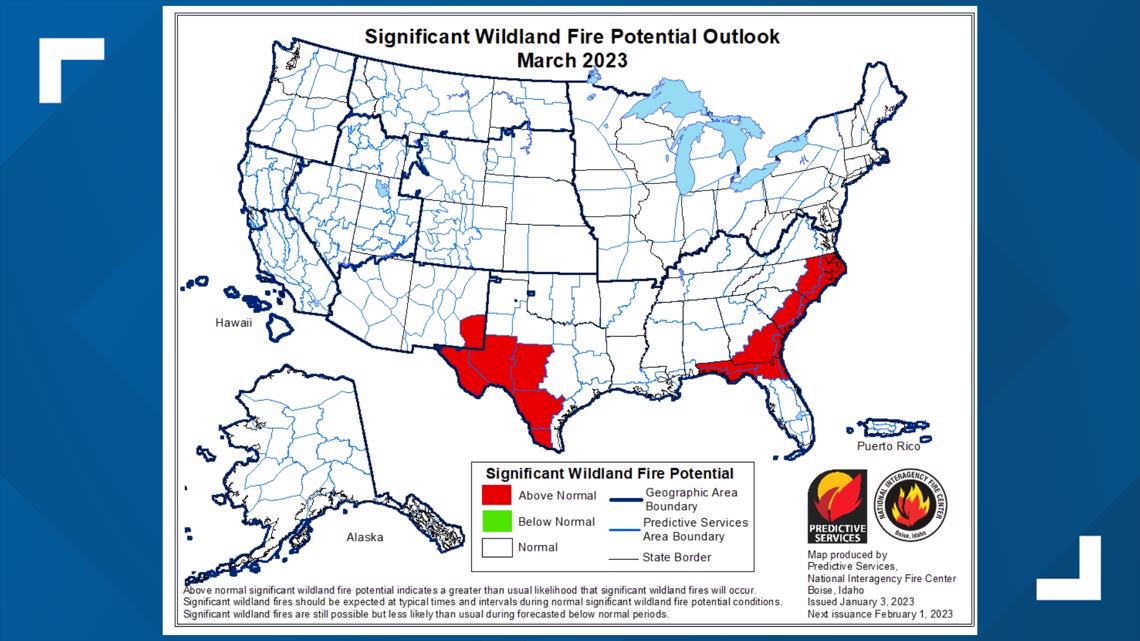
It is extra important this time of year to make sure all campfires are completely out and to discard cigarettes properly. Make sure you are also listening to local burn ban orders. It only takes one spark to burn hundreds, if not thousands, of acres.

